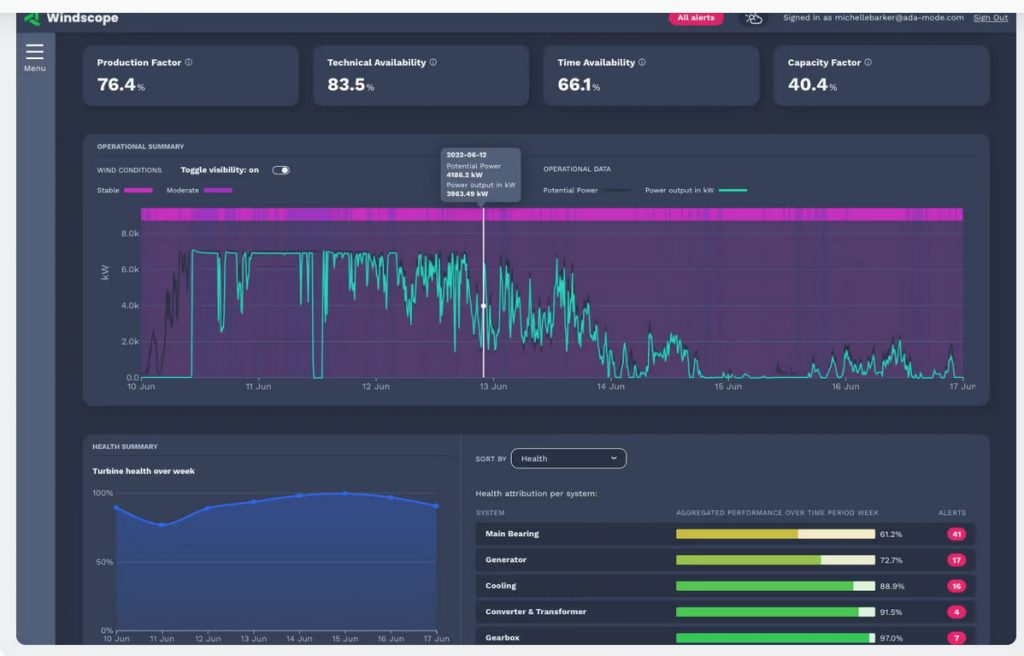More effective integration of predictive maintenance data and inventory data from component suppliers will be central to mitigating the impact of supply chain challenges on operational wind-energy projects. This is according to Windscope — a hardware-free platform for maximizing wind-turbine health and availability. At present, the wind industry faces a multitude of pressures in the face of inflation and the after-effects of the COVID-19 pandemic, which has disrupted manufacturing and stretched supply chains.

“To further the goals of the industry in a challenging economic climate, we need to create a more transparent environment in which predictive analytics can be used to optimize maintenance of assets, taking into account lead times for components and supply shortages,” said Joe Donnelly, Windscope CEO. “Ability to understand component condition is the keystone around which an optimized supply chain can start to form.”
“The immediate benefits of such an approach are clear, but there is also huge potential for exciting innovations, such as live tracking of component prices for asset owners, enabling them to make well-informed procurement decisions and secure components at the most favorable pricing,” he said. “In the future, we could even see automated ordering of components based on condition, further streamlining the procurement process, and reducing the administrative burden on stretched asset management and engineering teams.” Windscope is developing tools to enable asset managers to pair their inventory data with predictive maintenance data.
“By creating stronger connections between operators and their supply chain, we can help overcome the challenges posed by aging fleets, increased lead times, and rising costs, ultimately ensuring the continued growth of renewable energy,” Donnelly said. To address these challenges and promote efficient management of tight inventory schedules, Windscope has called for closer partnerships in the third party and OEM supply chains, in particular between asset managers and their component suppliers, facilitated by predictive maintenance software platforms.
By gaining access to component health data from operational fleets, suppliers will be able to anticipate when these components require replacement, enabling more efficient inventory management and procurement planning. In turn, keeping asset owners updated on a live basis about component stocks and their availability can help to reduce unplanned downtime, and enable asset managers to better prioritize maintenance.
More info www.windscope.com







































